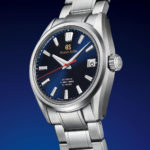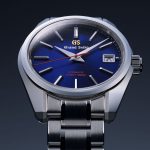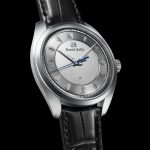Up Close: Grand Seiko 60th Anniversary Hi-Beat SLGH003
Going upmarket.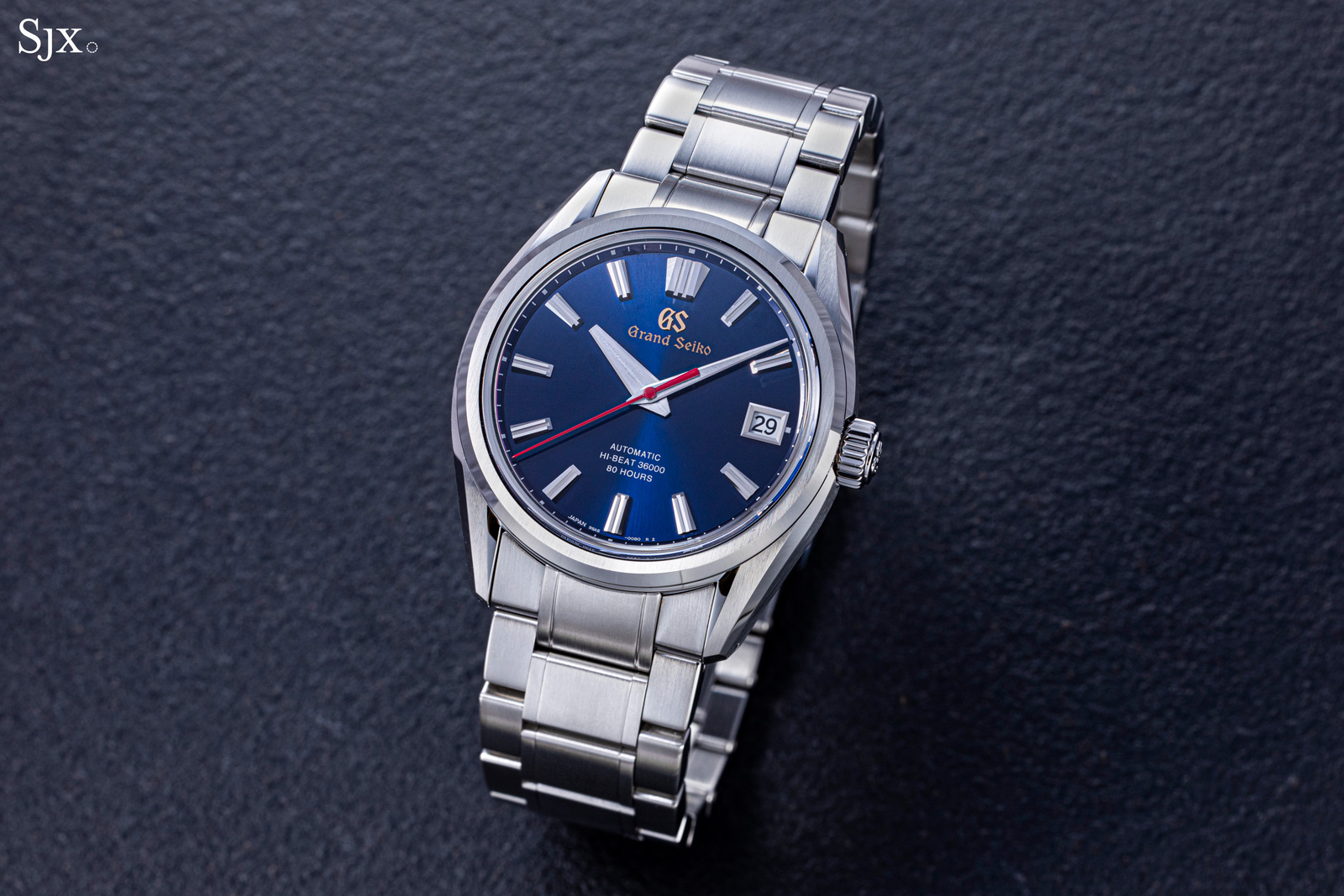
Last year’s 60th anniversary was a major event for Grand Seiko, which unveiled several new movements and plenty of limited editions to mark the occasion. The most notable launch was probably the 9SA5 movement, a high-frequency and high-end automatic calibre.
The movement made its debut in the luxe yellow-gold SLGH002, then in the steel Grand Seiko 60th Anniversary Hi-Beat SLGH003 a few months later. Since then the movement has been installed in a similar, but even more pricey platinum edition, and finally the regular production “White Birch” SLGH005.
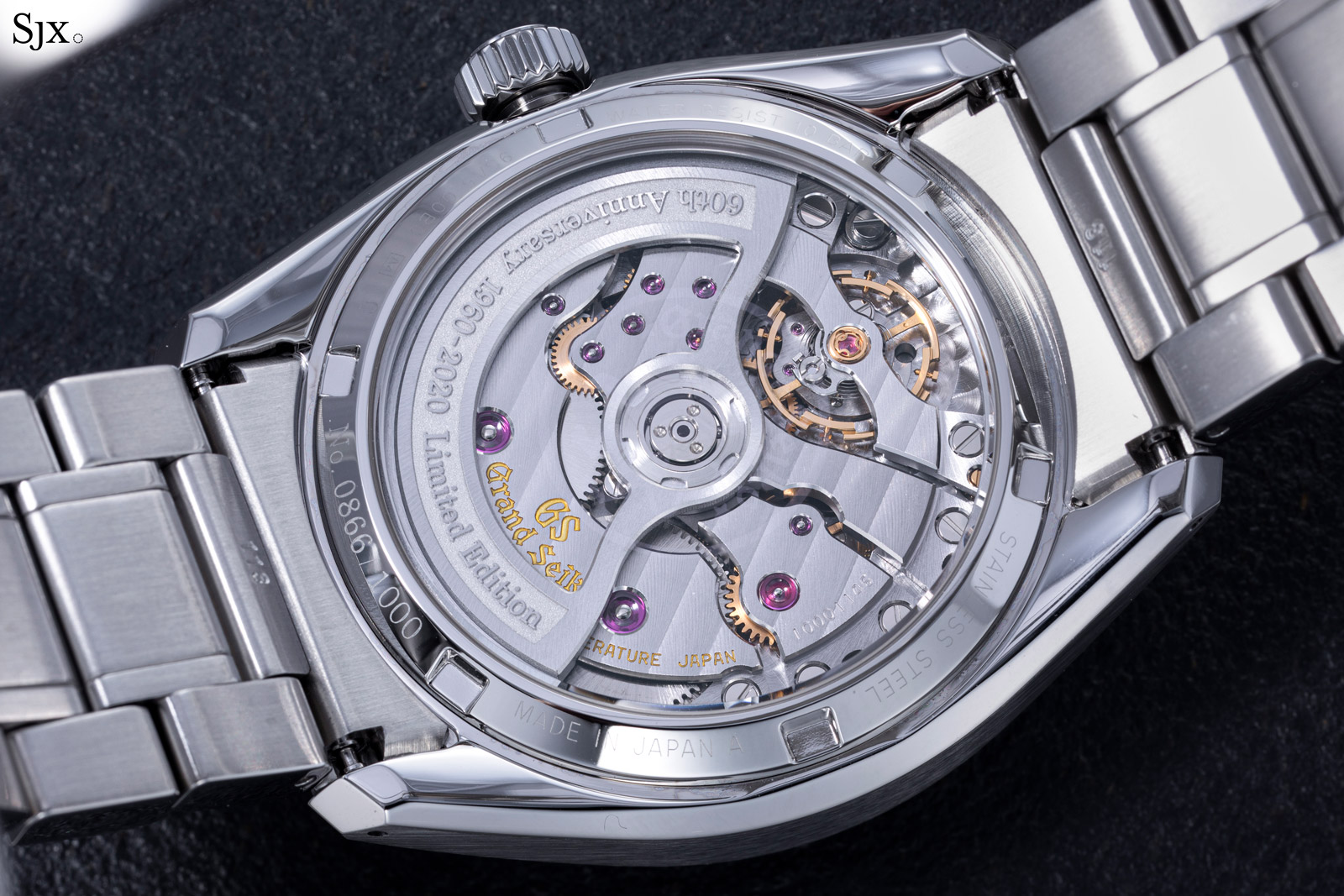
The cal. 9SA5
All the models are essentially the same, save for different dial finishes and case materials. Here we take a close look at the SLGH003 in steel as a representative for the “SLGH” family.
Like its siblings in the family, the SLGH003 is a brand-new reference. The case and dial designs evolved from the existing and familiar Grand Seiko style, but inside is a radically new movement – the cal. 9SA5 with a Dual Impulse escapement. The aesthetic changes have created more refined exterior that better showcase the brand’s case finishing, but more crucially, the improvements signify the brand’s moves upmarket – exemplified by the more elaborate movement and higher price tag.
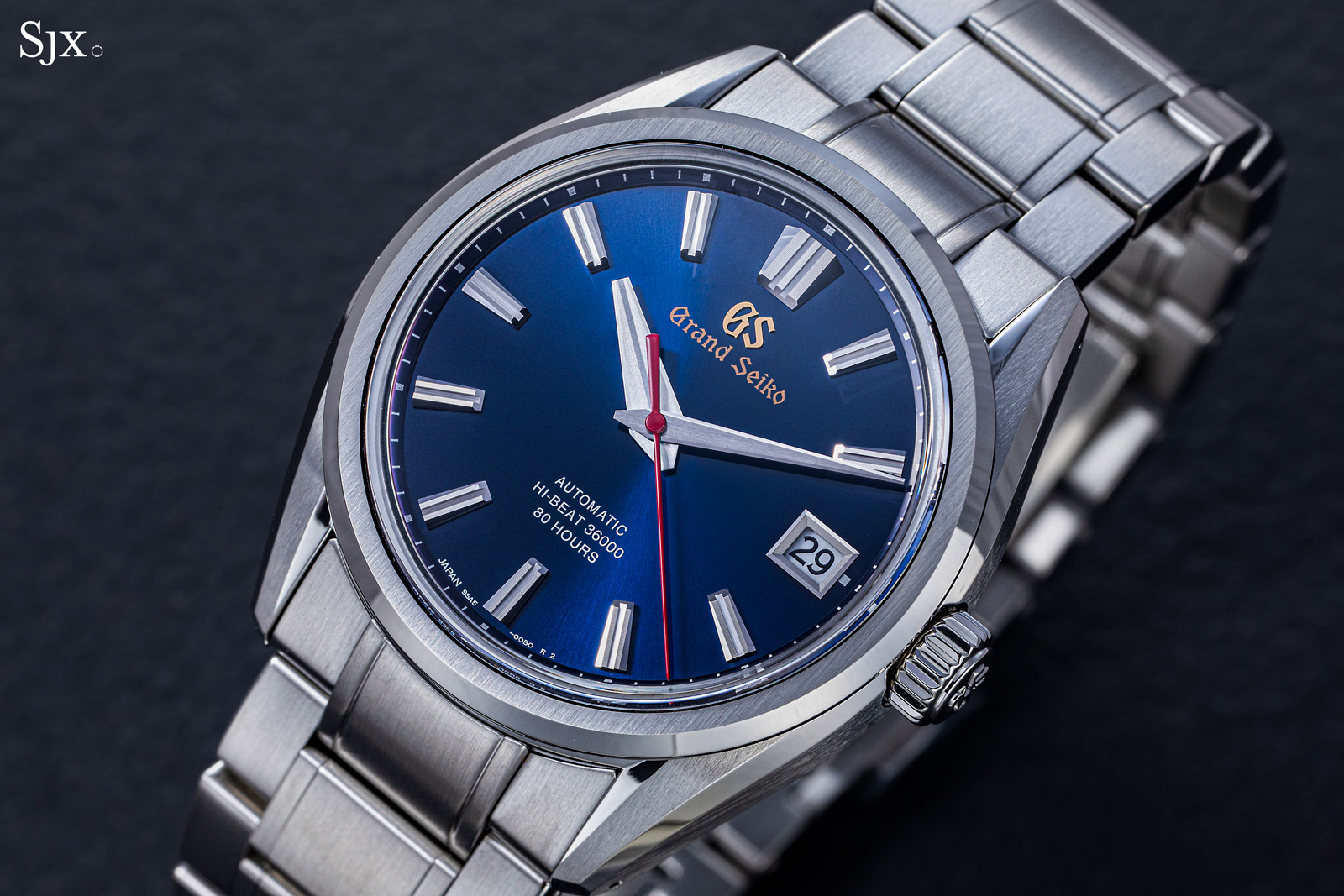
The SLGH003
Initial thoughts
Unique among the Grand Seiko line up in terms of its movement and styling, the “SLGH” family boasts new features that are mostly for the better, such as the more elaborate case and sophisticated movement. A few elements arguably fall short, such as the movement decoration – best described as having a Swiss or European aesthetic – that’s antithetical to brand’s traditional character.
The highlight is the 9SA5, which is kitted out with twin barrels and a Dual Impulse escapement that brings the escape wheel and balance into direct contact, increasing the efficiency of energy transmission. The result is an impressive 80-hour run time despite a high beat rate of 5 Hz, or 36,000 beats per hour (bph).
The new escapement is notable in itself, as mass production of non-lever escapements is rare – George Daniel’s Co-Axial escapement made by Omega being the only example – as the reliability and stability of new escapements is often inconsistent, making large-scale manufacturing difficult.
On top of its higher spec, the finishing on cal. 9SA5 is an improvement over the brand’s earlier generation movements. That said, I find the movement styling a missed opportunity – a more Japanese style that echos Grand Seiko’s historical aesthetic would have been preferable, as done in the new Spring Drive cal. 9R31 for instance.
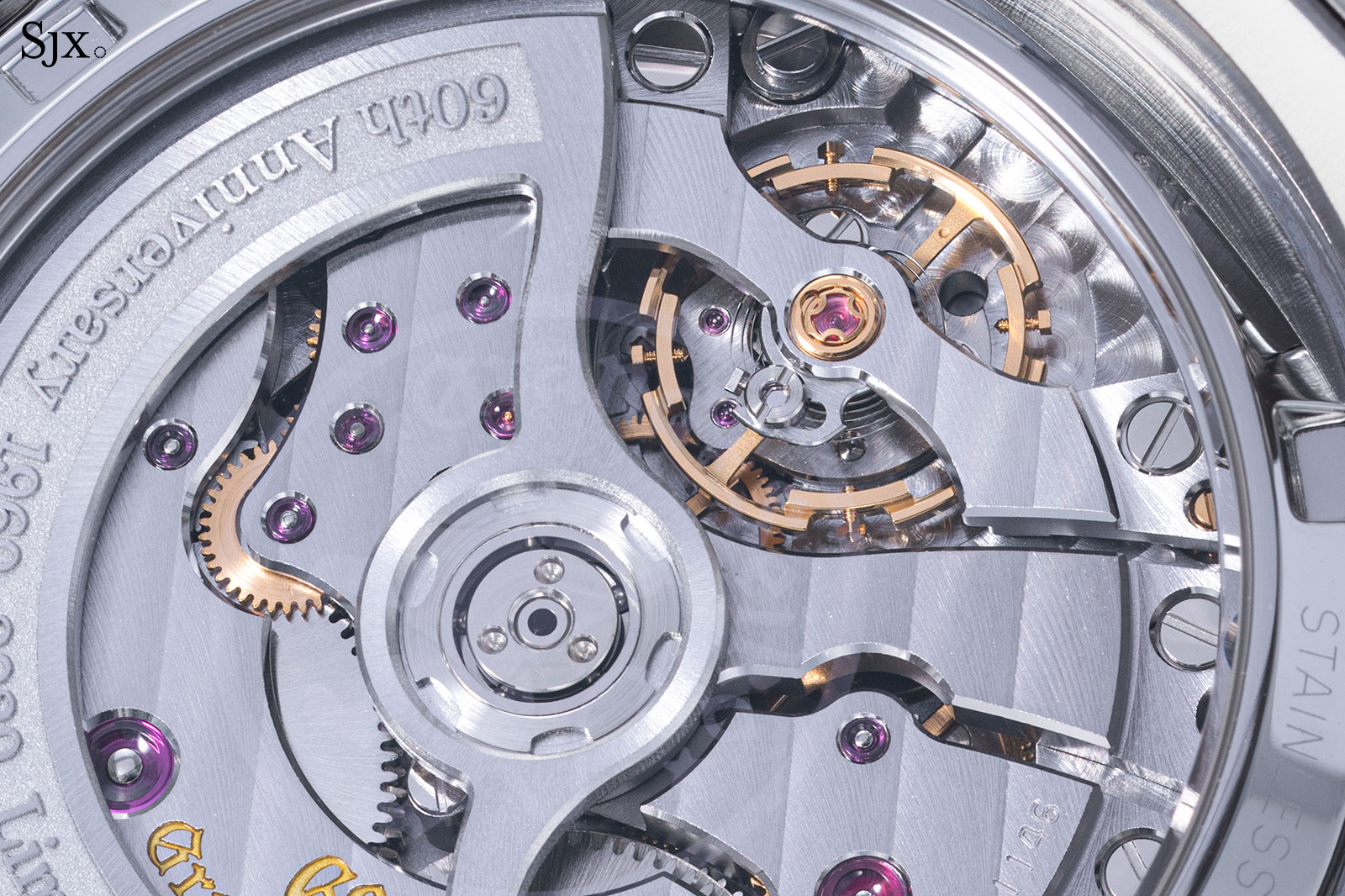
Dubbed “Series 9 Design”, the aesthetic of the SLGH003 is a surprise. The new case has sharp lines and facets that are characteristic of the brand’s “44GS” case, but done more gracefully, incorporating curves associated with the first-generation of modern-day mechanical Grand Seiko models that debuted in 1998 starting with the SBGR001.
In short, the SLGH003 is an appealing watch in both design and mechanics. However, two elements work against it. One is the blue dial that is one of many among the 60th Anniversary models, while the movement looks more Swiss than Japanese. It is also arguably a bit expensive at US$9,700, a price that feels disconnected with the brand’s typical pricing strategy.
Nevertheless, being a limited edition, the SLGH003 sold well. For anyone that missed the SLGH003, the regular production SLGH005 “White Birch” – identical save for the dial – is already a fan-favourite.
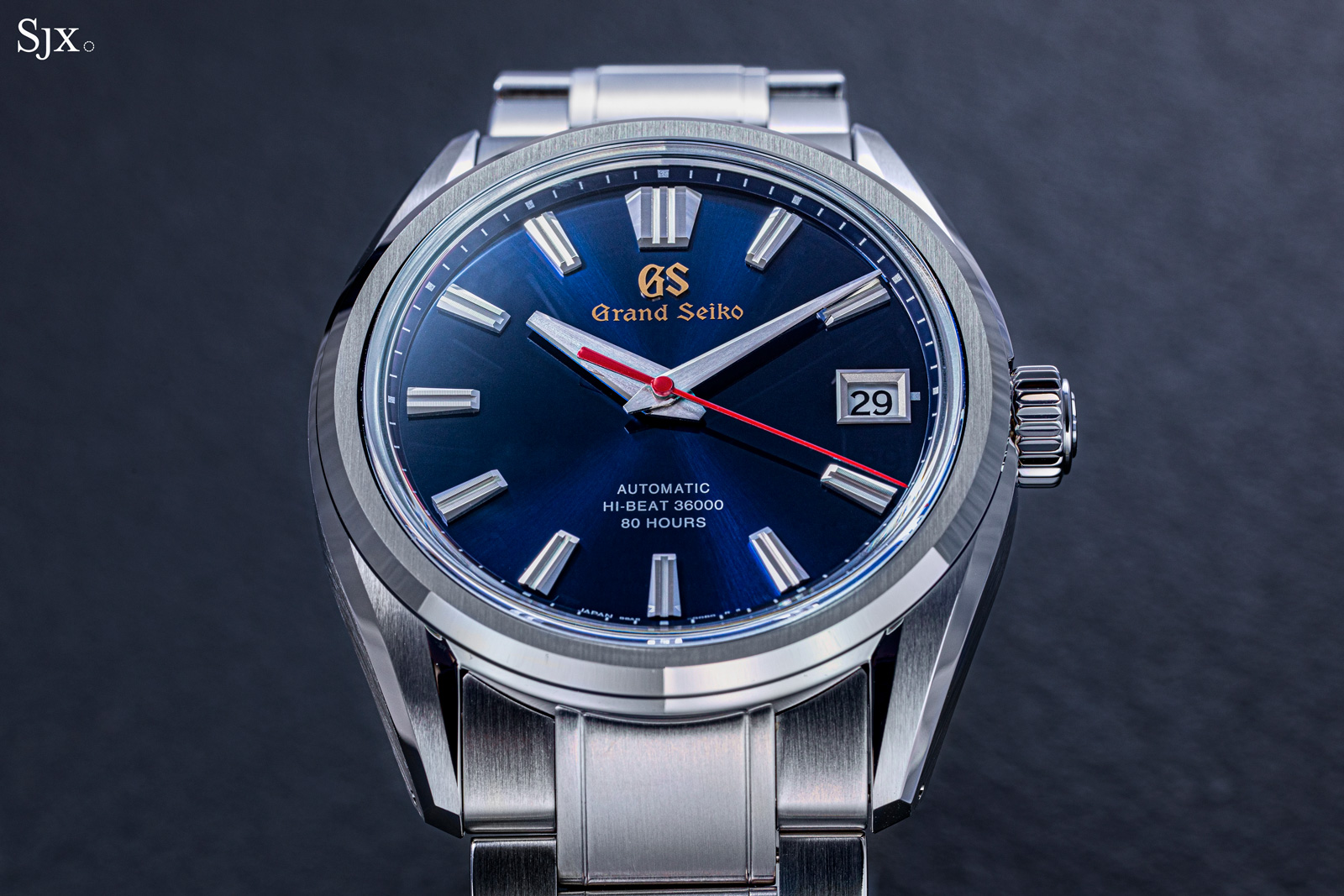
A new style
Historically, Grand Seiko’s biggest selling point was arguably the finishing of the case and dial, but its generally restrained, old-fashioned designs largely appealed to seasoned enthusiasts. That has changed with the Series 9 Design, which feels bolder and younger.
From a broader perspective, the Series 9 Design can be seen as another step forward in the brand’s evolution, which perhaps started with the Thin Dress collection of 2018. The new design philosophy can be summed by as a slimmer case with more brushed surfaces for increased contrast; more prominent hands; and more nuanced finishing on the indices.
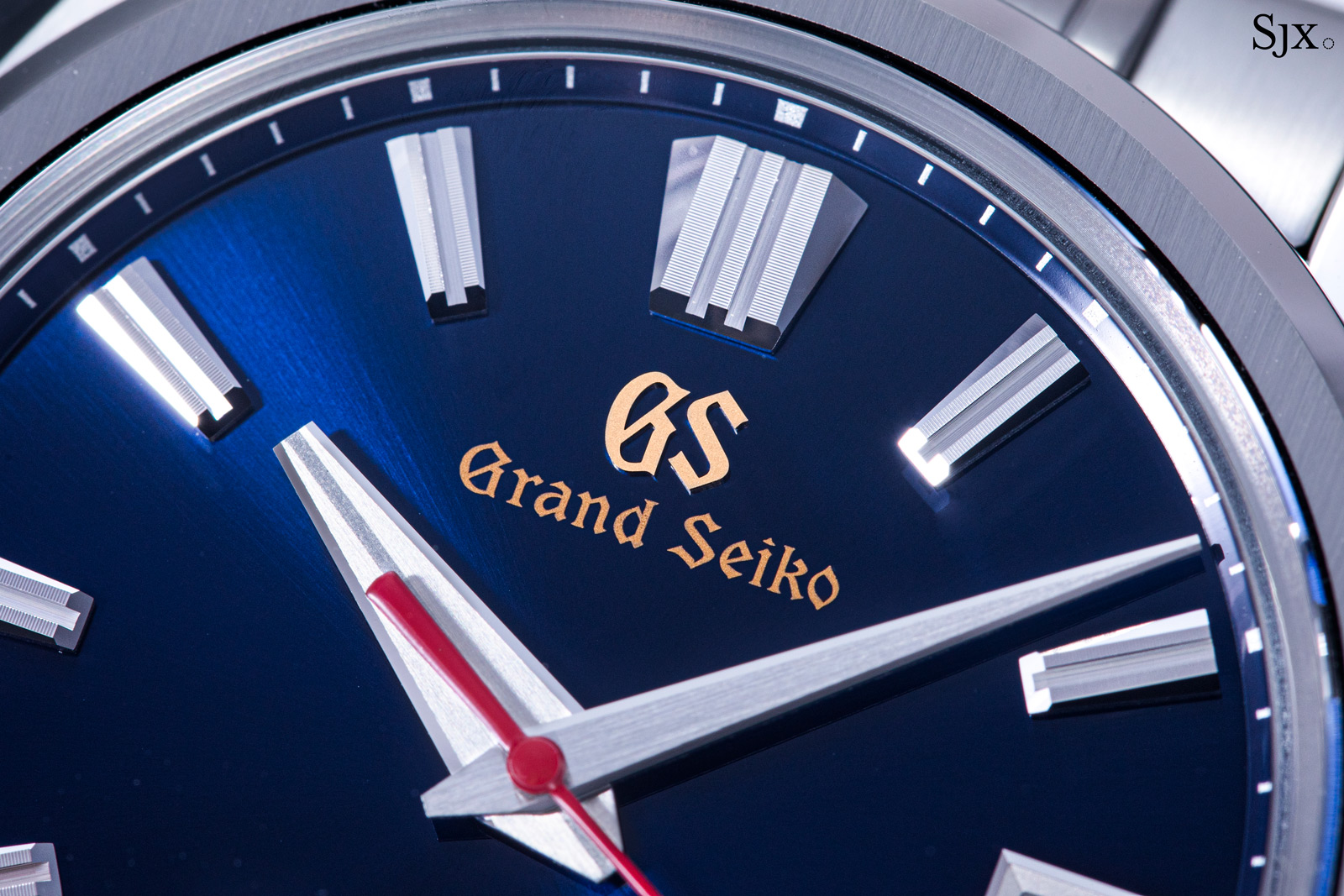
The Series 9 Design is evident across the SLGH003, and most obvious on the dial. Wider than on earlier generations, the hands are mostly matte, instead of the polished finish that was once the norm. Add to that the cut-off, flat tips, and they appear sportier.
Interestingly, the hour and minute hands finished differently. While the minute hand is linearly brushed, the hour hand is segmented lengthwise. Its centre-most section is frosted, and flanked by linear brushing on each side, giving it a surface that echoes the look of the hour markers.
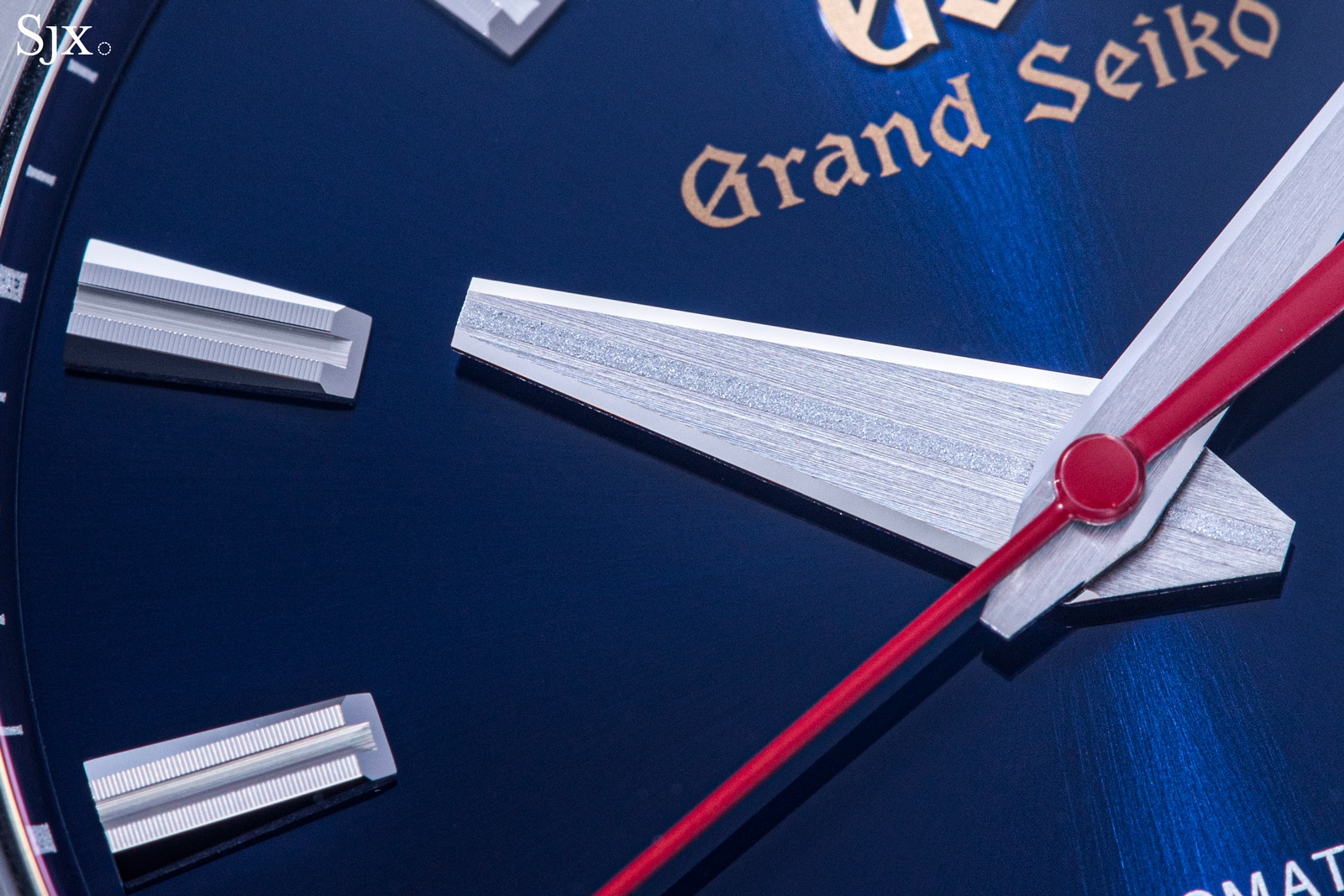
The markers have numerous facets and various finishing: finely milled fluting on the top, polished facets on the sides, and a brushed recess down the middle. Notably, while the new indices look strikingly different from past Grand Seiko dials, they are a subtle nod to the original Grand Seiko “First”, which had double baton indices.
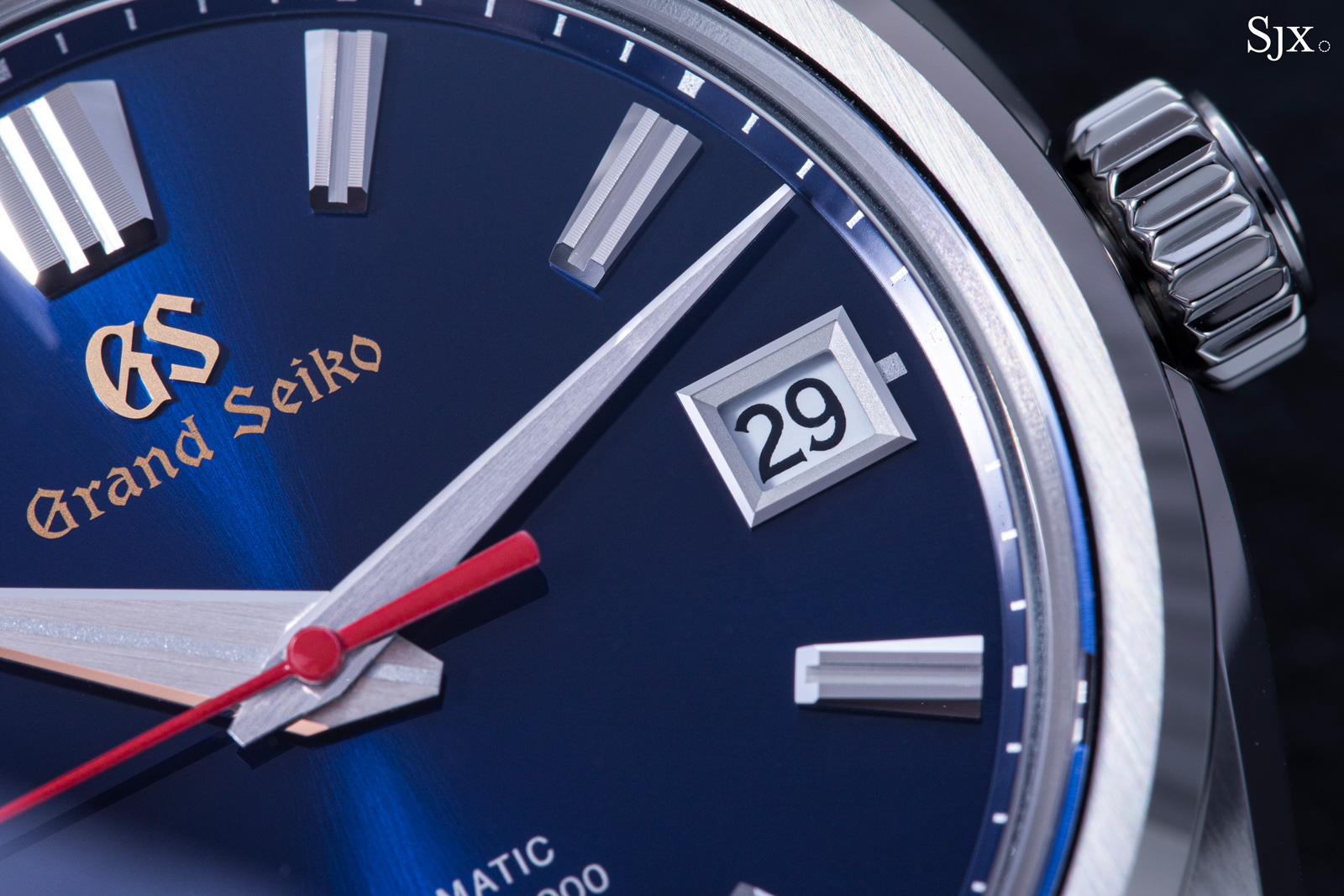
But since the indices are enlarged as compared to earlier Grand Seikos – especially the 12 o’clock marker – they are unabashedly bold with a slightly 1970s vibe. The look is might not be for everyone, but Grand Seiko still offers plenty of classical designs.
Equally bold are the dial colours, in contrasting blue, gold, and red. Nevertheless, almost all other 60th Anniversary models are clad in similar colours, making the combination less special. That said, the subsequent SLGH005 “White Birch” is arguably more unique, despite being regular production, with a patterned dial that’s very much in keeping with Grand Seiko’s nature-inspired motif.
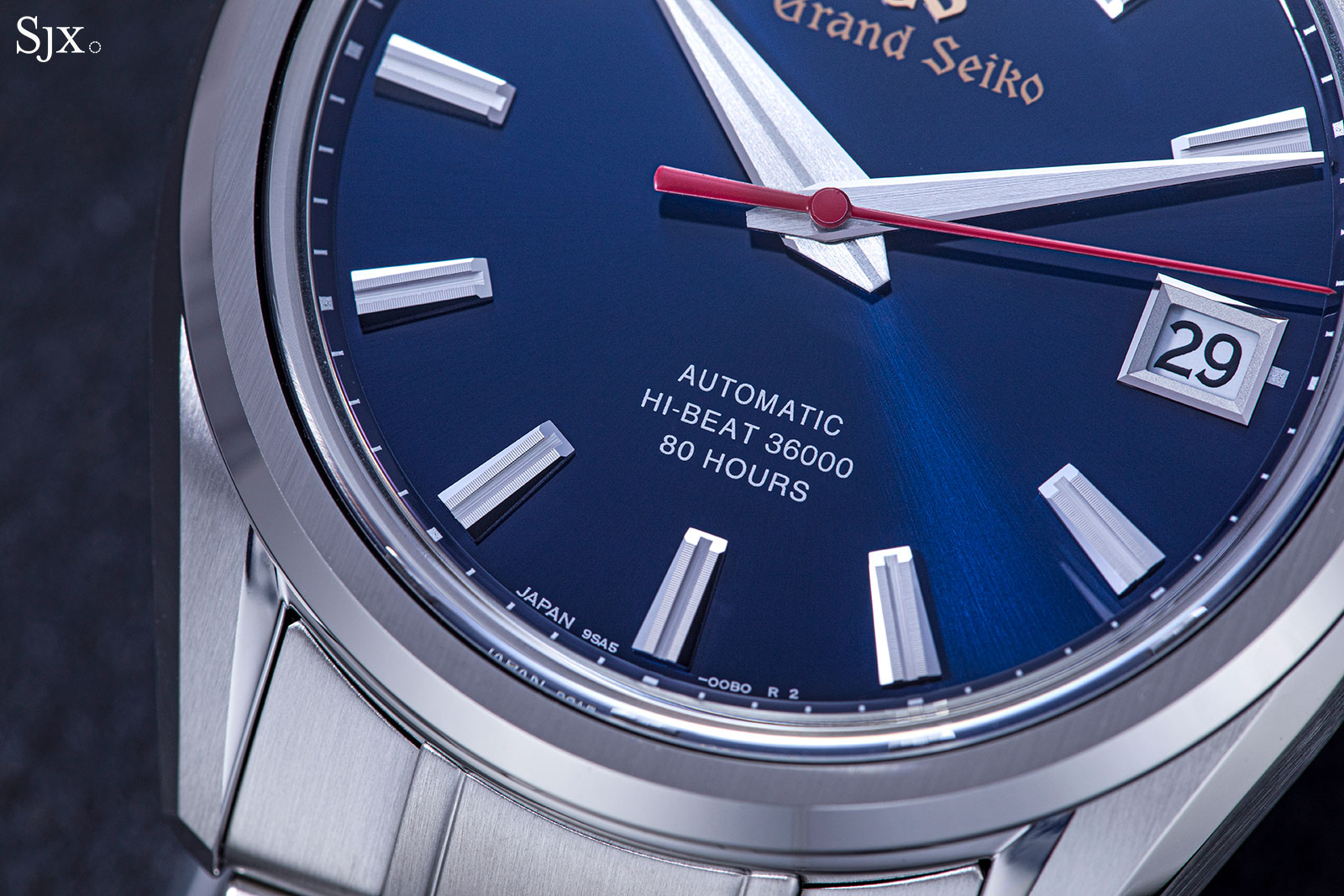
A pared-back case
As with the dial, the Series 9 Design of the case is an evolution of past Grand Seiko watches. Its historical inspiration is best appreciated by looking into two case designs widely used after the mechanical Grand Seiko was resurrected in 1998.
That was typified by the “9S” style found on the SBGR001 of 1998, the first Grand Seiko mechanical watch in over two decades (which was powered by the automatic 9S55). Still part of most Grand Seiko watches – the “Snowflake” is perhaps the best known today – the “9S” style case is characterised by the narrow, polished bevels that trace the case length, creating an appearance of a double-stepped case.

Another important case design is the modern interpretation of the 44GS. Unlike the sleek “9S”, the 44GS is angular, with wide, polished facets. That makes for a striking case with aggressive lines, but I find the proportion of modern 44GS case isn’t as graceful as the “9S” cases or even the vintage original 44GS.
The Series 9 Design is interesting because it combines the best traits of the two case styles. At a glance, its refined lines call to mind the “9S” case, but a closer inspection shows that the multi-faceted lugs that bring to mind the 44GS.
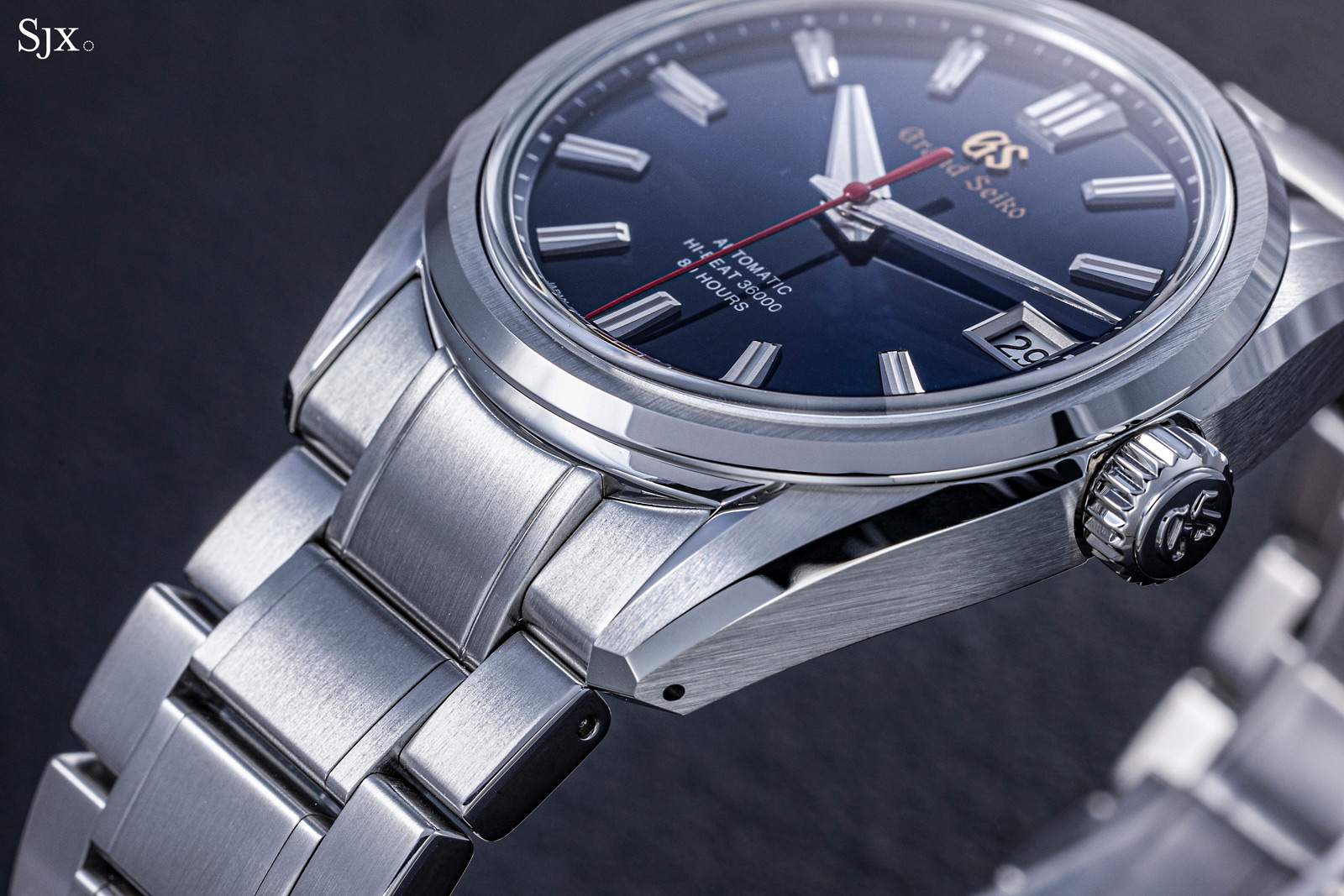
The polished bevels end in a small, angular facets
Notably, Series 9 case has more brushed surfaces than the average Grand Seiko case. Most obvious is the bezel that has a vertically brushed top and polished, sloped side – a combination unusual for the brand – making it more interesting than the usual polished finish.
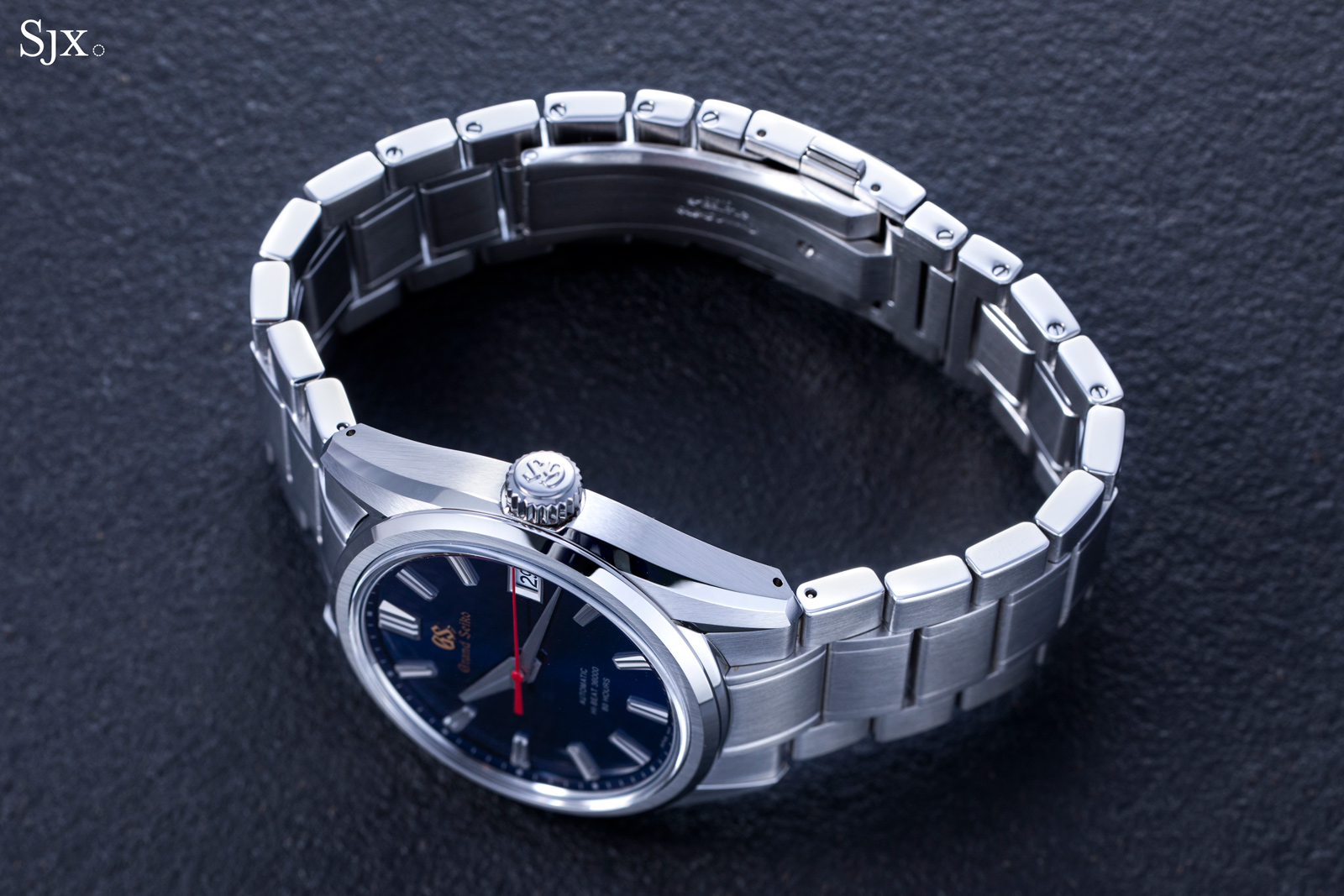
Additionally, the case flank is fully brushed lengthwise, which is again unusual but becoming more common since the “Thin Dress” series was introduced.
Less noticeably, but obvious by inference, is that there are only few polished surfaces remaining. The liberal use of brushing for the case is noteworthy for several reasons. For one, it better showcases Grand Seiko’s vaunted finishing by creating more of the precise edges between polished and brushed surfaces. Secondly, the contrast between the different finishing techniques give the watch a more balanced and modern appearance.
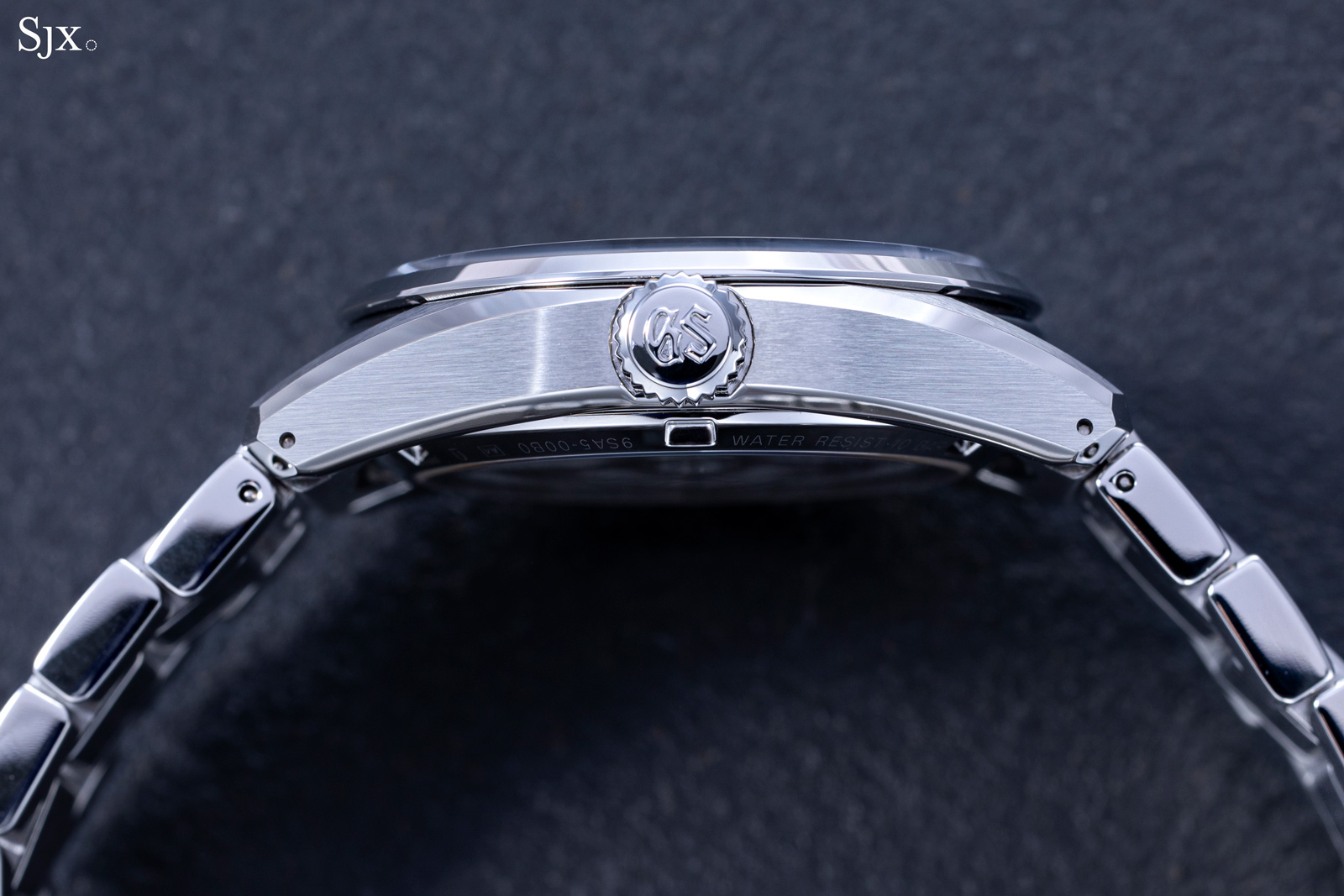
And the bracelet design is also new, with wider and shorter links, making it more flexible and hence more comfortable on wrists. That said, the look of the bracelet remains slightly old fashioned, especially with the bands on either side of the centre link.
And it was a missed opportunity in terms of the clasp, which remains functionally identical to the earlier generation bracelet, which means there is no on-the-fly “micro” adjustment that is now the norm for many watches in the price segment.
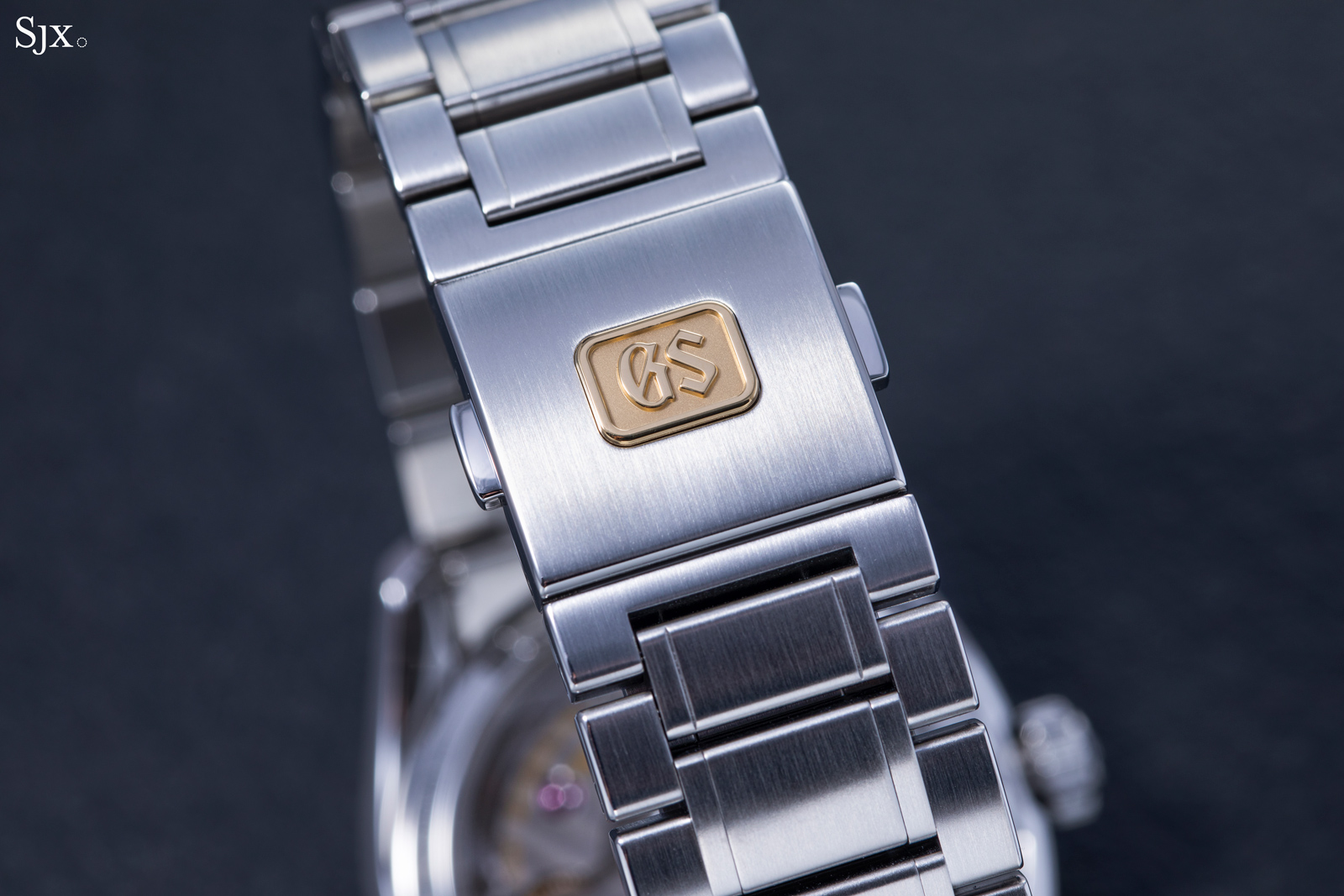
The solid-gold medallion on the clasp is unique to the limited-edition SLGH003; the standard production SLGH models have a steel medallion
A new workhorse
While its key feature is the novel Dual Impulse Escapement, the cal. 9SA5 is a brand-new movement in all respects, with many details setting it apart existing calibres. Most obviously, the architecture and decoration are in line with the taste of the broader market – hence the Swiss aesthetic – marking a turning point for the brand in terms of movement design.
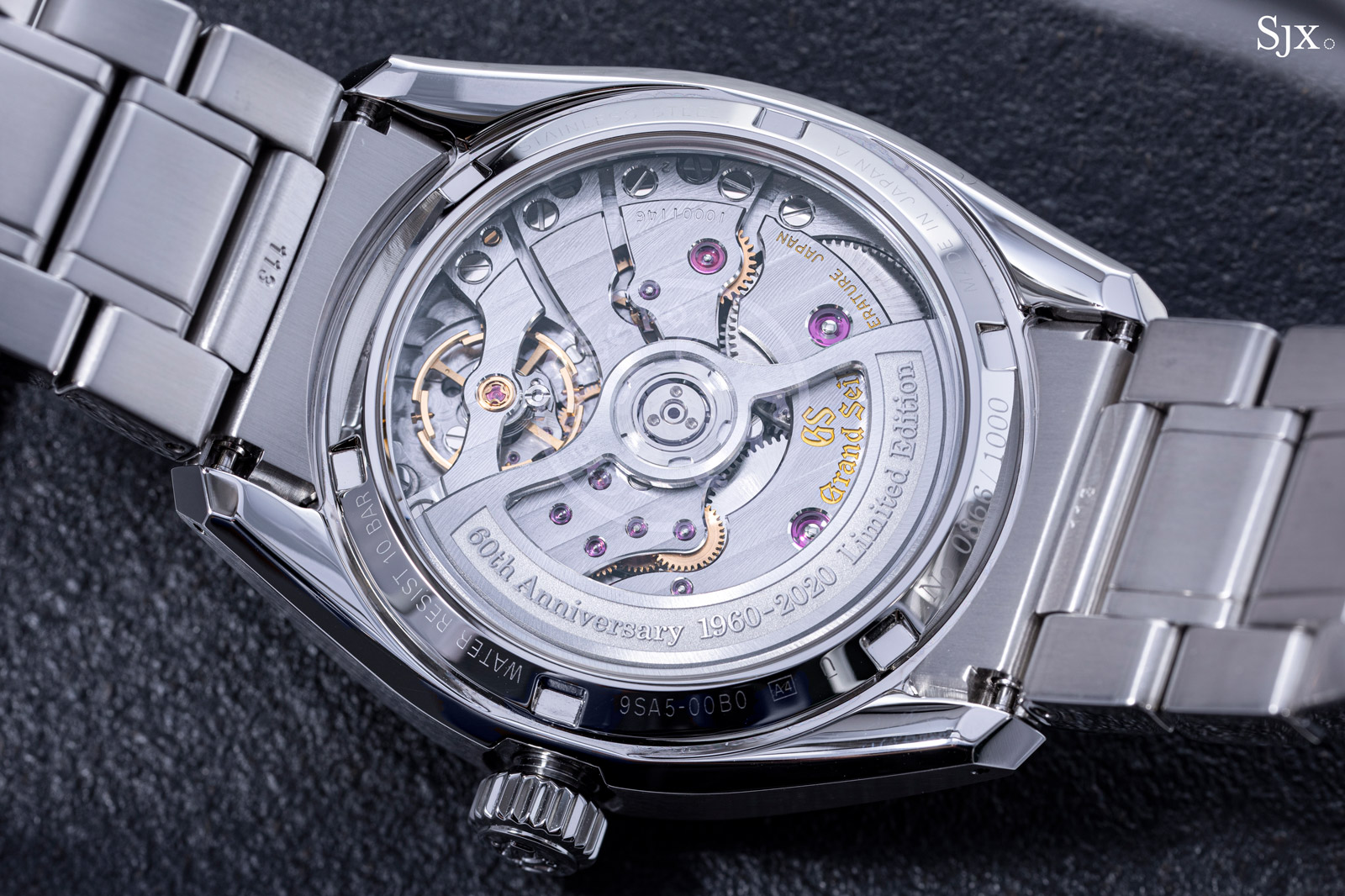
With the 9SA5, Grand Seiko debuted a whole new regulating organ, from the balance bridge to escapement. The escapement is significant in itself, for rare is a departure from the tried-and-tested lever escapement, which is reliable but not particularly efficient. The lever escapement’s inefficiency lies in the intermediary between the escape wheel and balance, the pallet fork. Doing away with the pallet fork – thus creating a direct-impulse escapement – reduces energy loss due to friction, but such set-ups are seldom mature enough to be industrialised.
The Dual Impulse Escapement, however, combines the traits of the two extremes in escapement design. Energy is delivered to the balance in two routes, depending on the direction of its swing: energy is transferred indirectly through a pallet fork in one direction, while in the opposite direction it goes direct from the escape wheel to balance.
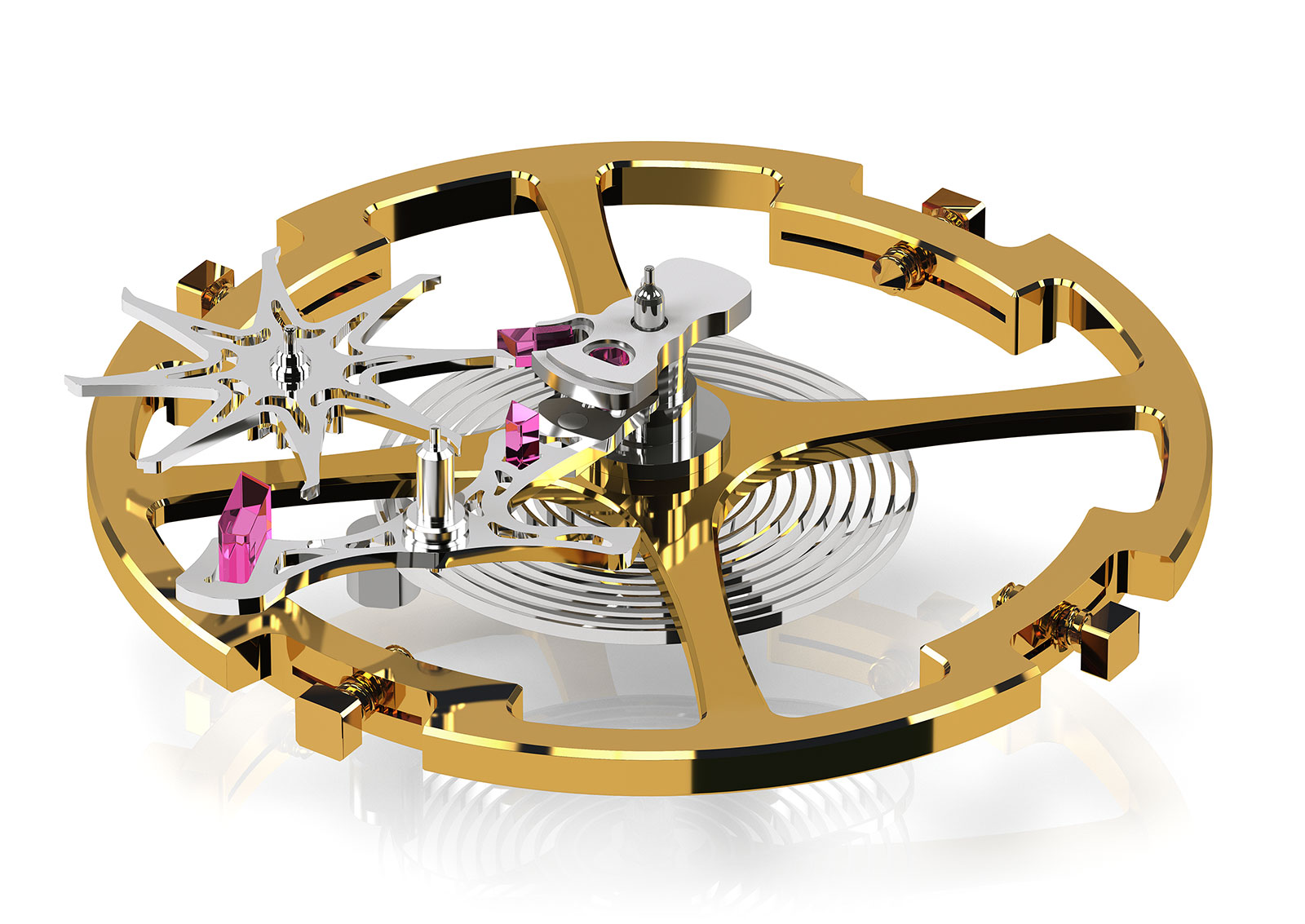
The Dual Impulse Escapement in the 9SA5
The pallet fork and escape wheel are fabricated using a high-precision lithography technique (a form of microelectromechanical systems tech, better known as MEMS), giving them optimal geometry, while also allowing for skeletonisation to minimise their weight and inertia.
The reduction of energy loss due to friction, coupled with twin mainspring barrels, give the movement a run time of 80 hours, compared to 55 hours for the earlier generation of Grand Seiko movements.
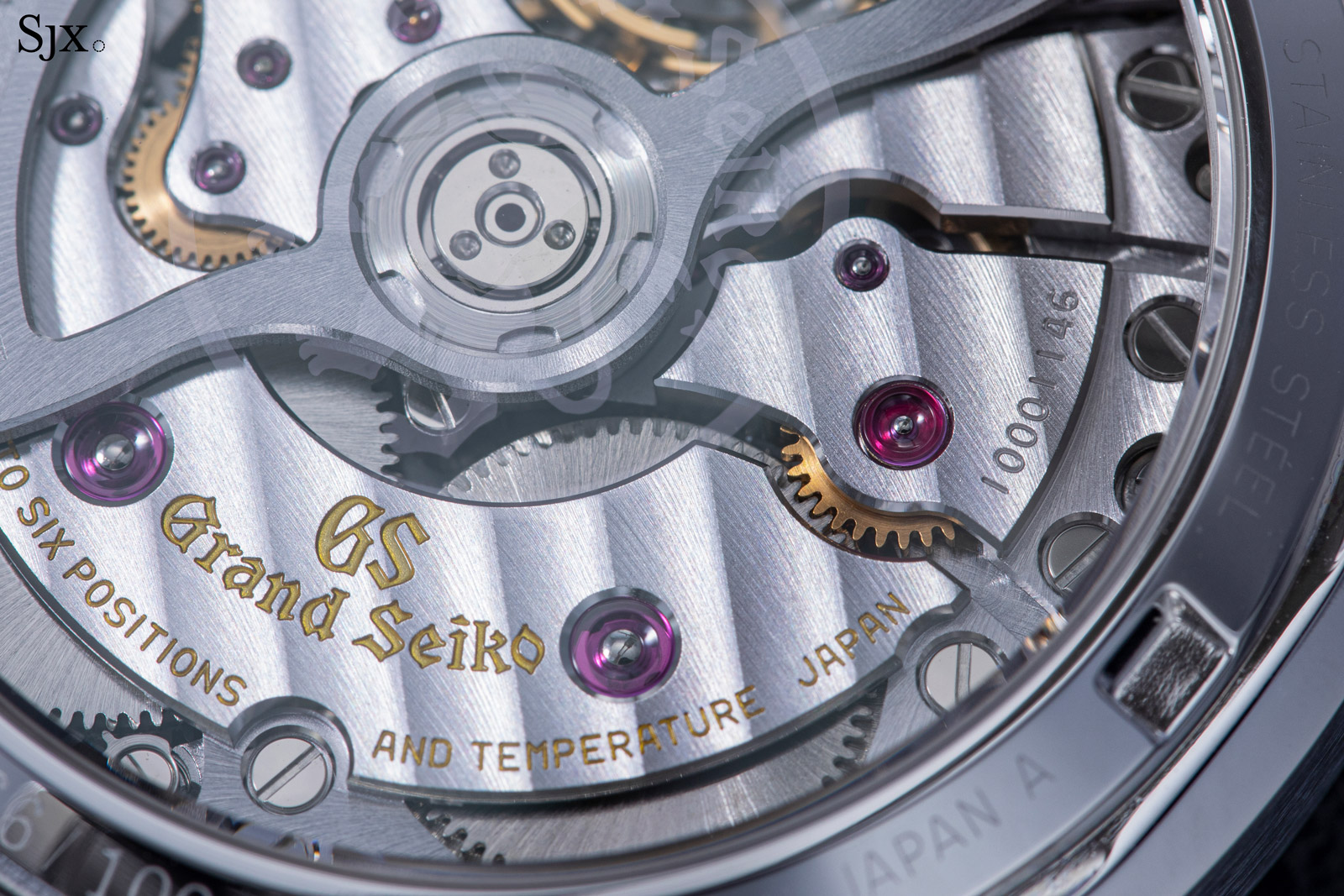
The pivot jewels for each mainspring sit on either side of the “Grand Seiko” logo on the barrel bridge
In addition to a new escapement, the regulating organ of the 9SA5 is upgraded over previous generations. For the first time, Grand Seiko does away with the regulator, and instead relies on a free-sprung balance with variable inertia. Like many modern balance wheel designs, it features regulating screws within recesses along the rim of the balance – so the tops of the screws are almost level with the balance rim – reducing drag due to air friction as the balance oscillates.
At the same time, the conventional flat hairspring has been replaced with Seiko’s own overcoil design (presumably conceived with in-house finite element analysis), which allows for more concentric breathing of the hairspring. Theoretically, the two features combined improve isochronism, resulting in a consistent beat rate regardless of mainspring torque.
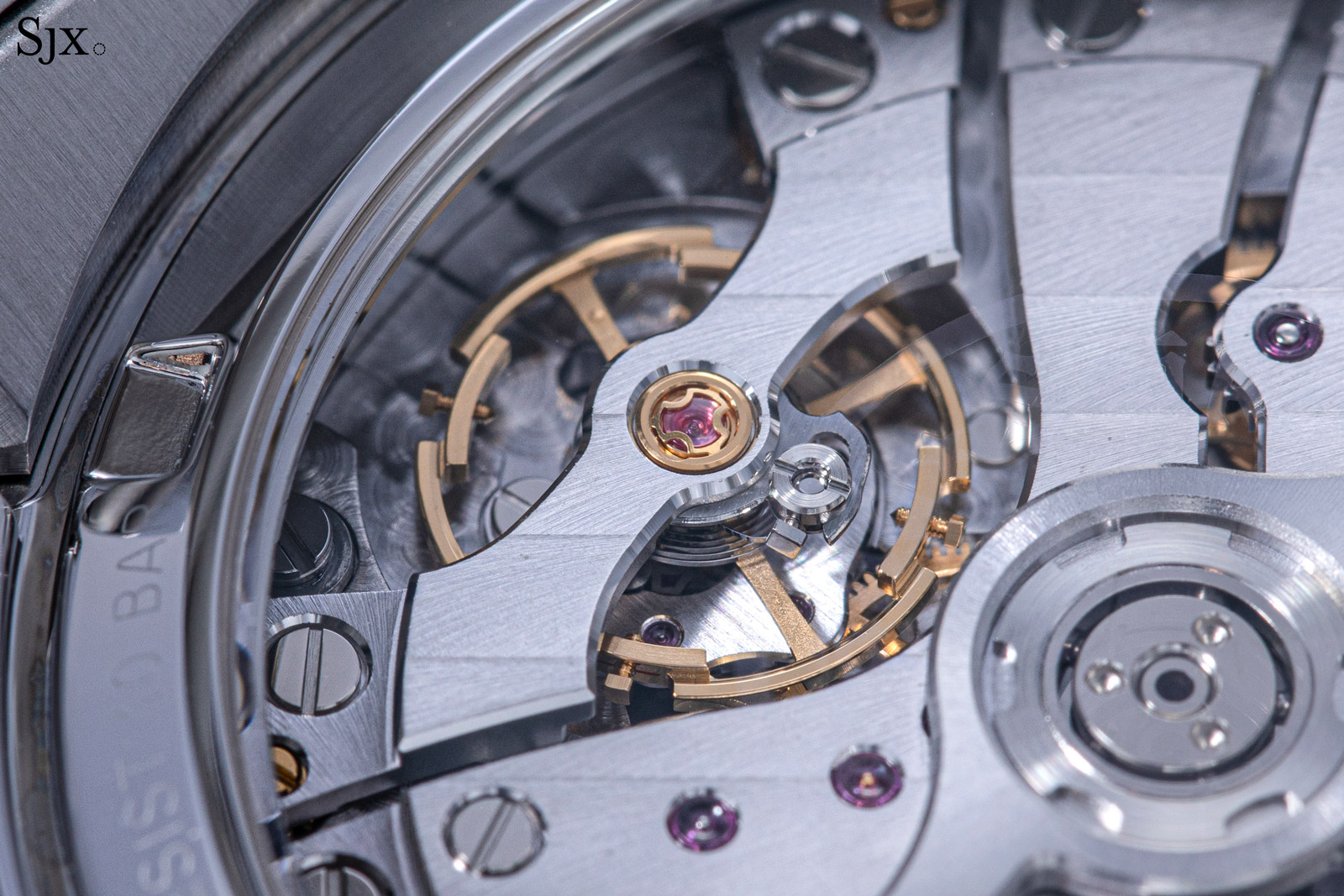
The freesprung balance wheel with recessed slots along its rim for the variable-inertia screws
Yet another improvement is the use of a full balance bridge that’s secured by screws on both sides of the balance, providing more stability than a traditional balance cock that is anchored only on one side of the balance. Now standard in movements from major Swiss brands like Rolex and Omega, the balance bridge improves shock resistance and timekeeping stability.
In addition to technical features to improve timekeeping, Grand Seiko also implemented two extra features to improve the user experience.
First, the gear train was designed in a horizontal layout, with almost all its wheels on the same plane to make the movement thinner. So the going train wheels are located to the right of the balance wheel as seen from the back of the watch, while the automatic winding wheels are located to the left. This isn’t revolutionary per se, but it reduces the overall movement and case thickness to 5.18 mm and 11.7 mm respectively – making it tangibly thinner than past Grand Seiko Hi-Beat automatic movements that were usually 13 mm or greater in height.
And second, the 9SA5 has an instantaneous date that changes in a blink of an eye at midnight, instead of the gradual, roll-over date change found on other Grand Seiko calibres.
Movement finishing
The cal. 9SA5 presents an aesthetic much different from its predecessors. The finishing is done to a higher level, while the architecture is more revealing.
The decoration of the cal. 9SA5 is well done, with all visible parts attended to. For instance, there are now bevels and countersinks on the bridges and rotor, which the previous generation cal. 9S85 lacked.
Also, the complicated shapes of the bridges allow for more sharp outward angles along the bevels, which is a plus. That said, while the diamond-cut bevelling is well done, the tell-tale milling marks are visible up-close.
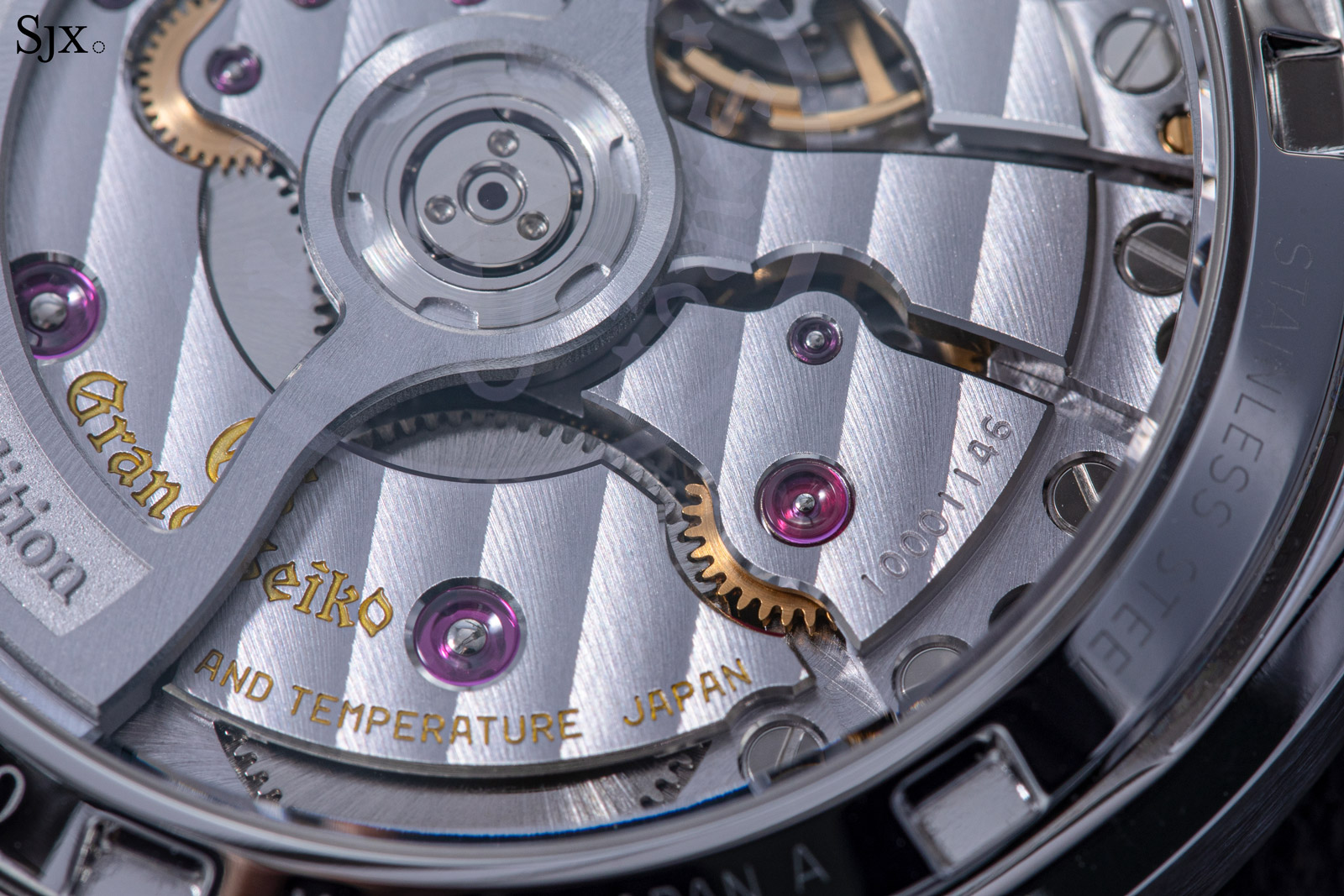
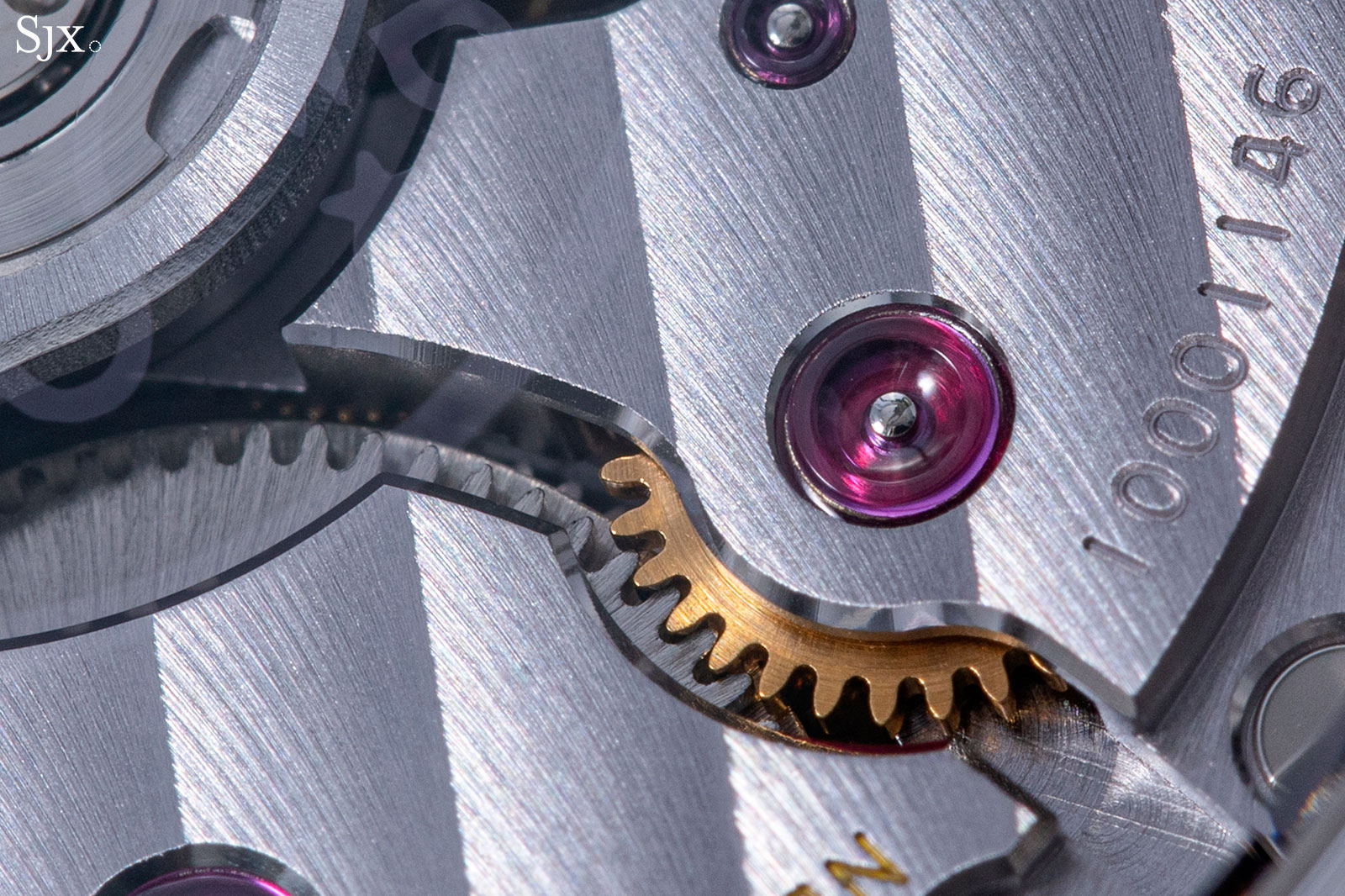
Earlier generations of Grand Seiko movements were distinguished by deeply etched stripes that were almost akin to engraving. In contrast, the striping on the 9SA5 is shallow and finely grained, making it reminiscent of Cotes de Geneve found in the typical mid- to high-end Swiss movement.
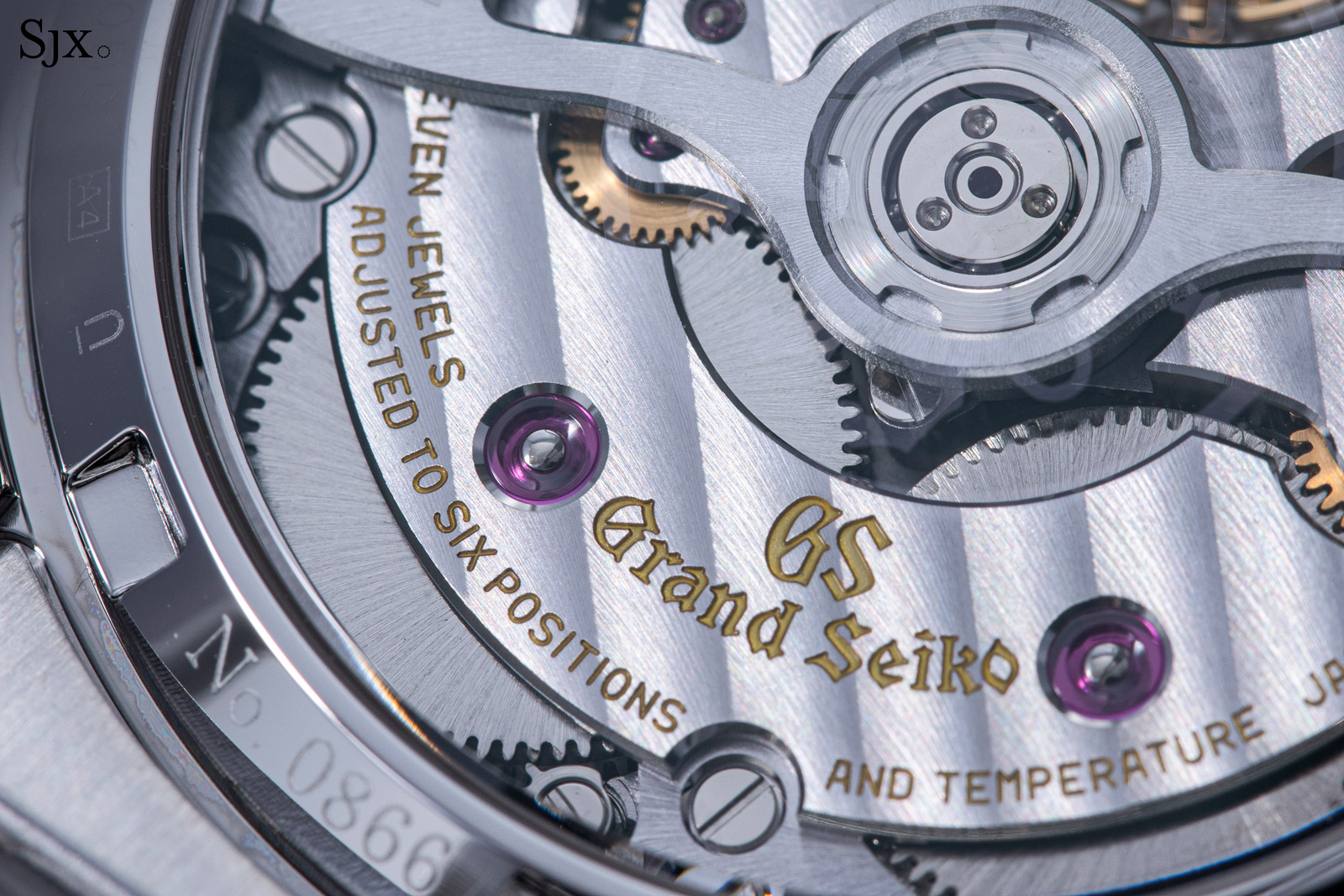
All bridges bevelled on their edges
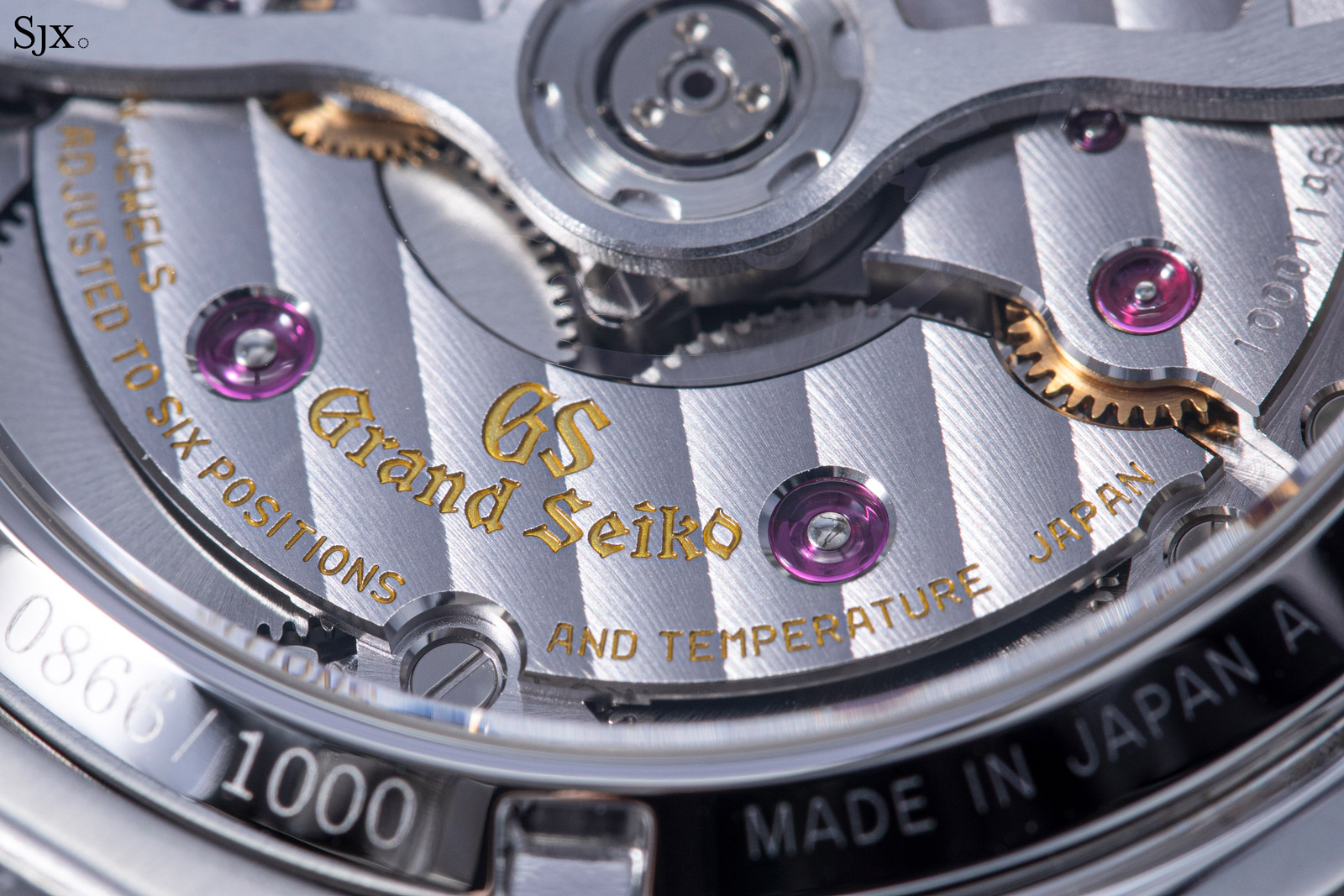
With polished countersinks for the jewels and screws
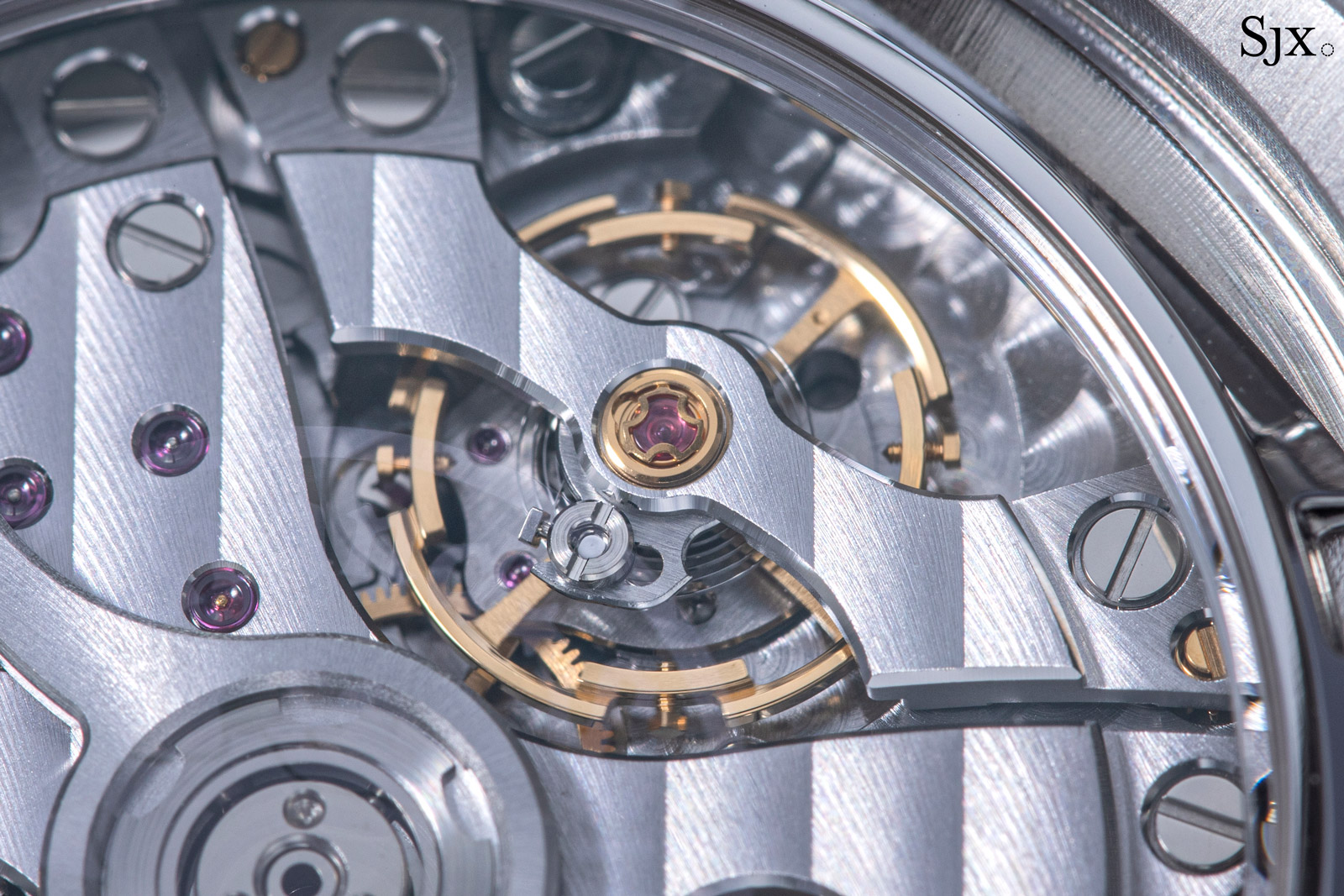
The neat and symmetrical balance bridge
On a side note, it is debatable whether the upgrade in finishing was strictly necessary or worth the additional cost. While the more refined, “Swiss” look will appeal to the broader market, movement finishing for sheer aesthetics has never been part of the Grand Seiko identity, at least historically speaking. Grand Seiko did, however, finish functional movement parts, such as the pivots of the wheels and pinions, to increase efficiency.
At the same time, the resemblance to Swiss movements in terms of architecture and decoration is a more obvious issue, since there is now less to differentiate Grand Seiko. That’s especially so given the recent cal. 9R31 Spring Drive movement shows that aesthetic upgrades can be done with Japanese flair.
Importantly, it’s worth mentioning the new Citizen cal. 0200, which is finished to a higher level but priced much lower, while managing to avoid looking too much like a Swiss movement.
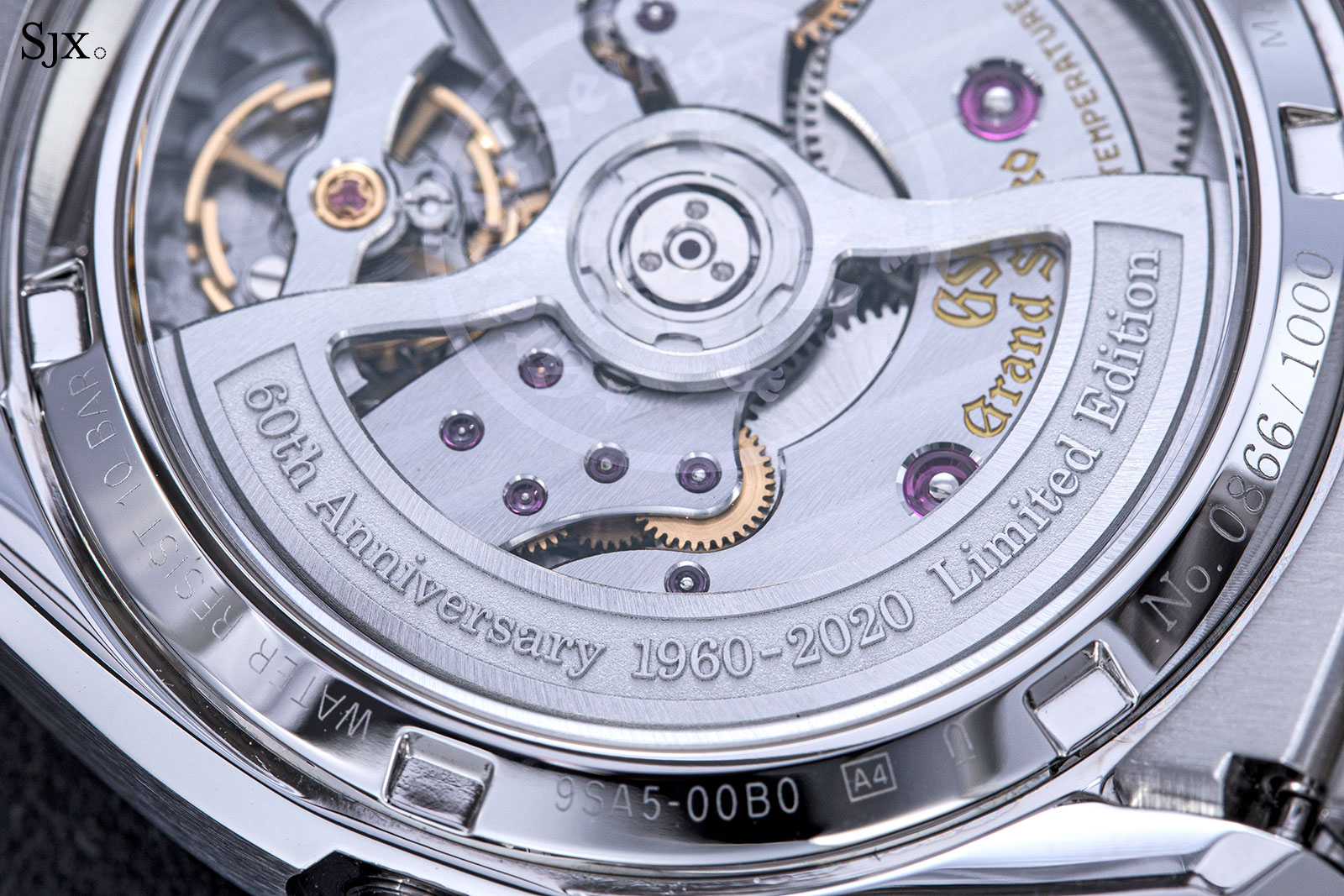
Conclusion
The SLGH003 is a landmark for Grand Seiko, with the improvements inside and out showing the brand’s technical progress as well as its growing international appeal. All in all, the new Series 9 Design is handsome – with better fit and finish compared to earlier models – and the movement is excellent in both construction and decoration.
But compared to earlier generations of Hi-Beat models, the SLGH003 has a higher price tag. It does still offer honest, good value, but not quite as much as the past watches. Nevertheless, thanks to the well-executed dial and case in the unmistakable Grand Seiko style, as well as the innovative Dual Impulse Escapement, the SLGH003 stands out. Its successor, the regular production SLGH005 “White Birch”, is the flagship mechanical Grand Seiko watch for good reason.
Key facts and price
Grand Seiko 60th Anniversary Caliber 9SA5 Hi-Beat 36000 80 Hours
Ref. SLGH003
Diameter: 40 mm
Height: 11.7 mm
Material: Steel
Crystal: Sapphire
Water resistance: 100 m
Movement: Cal. 9SA5
Features: Hours, minutes, seconds, and date
Frequency: 36,000 beats per hour (5 Hz)
Winding: Automatic
Power reserve: 80 hours
Strap: Steel bracelet
Limited edition: 1,000 pieces
Availability: At Grand Seiko boutiques and retailers
Price: US$9,700; or 1 million Japanese yen
For more, visit Grand-seiko.com.
Back to top.

